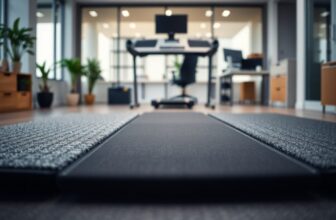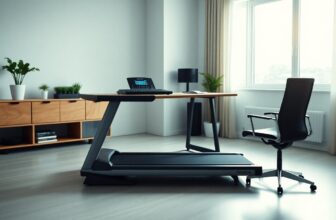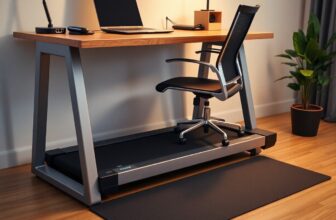
Your work day runs on signals. Your cells send tiny currents. Your nerves fire. Your heart and brain pulse in rhythm. Think of this as your operating system. Think of it as your body’s voltage. When that system runs clean, you feel sharp. You move well. You recover fast. Ergonomic science can help you reach that state. It can lift strain from your system. It can support energy and focus. It can protect your long term health.
This guide shows you how. You will learn what your body’s voltage means in simple terms. You will learn why posture, light, and tools matter. You will learn steps you can use today. Each section gives clear actions. Each point links back to your cells and your signals.

What “your body’s voltage” really means
Your body runs on bioelectricity. That is not a buzzword. It is basic biology. Every cell holds a charge. This is the membrane potential. It comes from ions like sodium, potassium, calcium, and chloride. Nerves use fast shifts in charge to send action potentials. Muscles use charge to contract. Your heart beat is an electrical wave. Your brain has rhythms that rise and fall all day.
When this electrical work stays stable, you feel it. Your reactions are quick. Your mood is even. Your sleep is deep. When it falters, you feel it too. You get fog. You tire fast. You ache.
- Your body’s voltage depends on many parts:
- Ion pumps that move sodium and potassium
- Mitochondria that make ATP for those pumps
- Blood flow that brings oxygen and glucose
- Hydration and electrolytes that carry current
- Nerves that glide through tissue without pinch
- Hormones and circadian rhythms that time your day
Ergonomics supports all of this. It reduces stress load. It keeps tissues in good shape. It protects nerves and blood vessels. It sets the scene for steady charge in your cells.
Why ergonomics matters for your body’s voltage
Ergonomics is the science of fit. It fits tasks, tools, and spaces to the human body. A better fit lowers strain. It cuts needless effort. It prevents injury. It lets your nervous system do deep work with less cost.
This matters at scale. Low back pain is the top cause of years lived with disability in the world. That comes from the Global Burden of Disease reports. Work related musculoskeletal disorders also affect many workers. These problems drain energy. They disrupt sleep. They dull focus. They blunt your body’s voltage every day.
Inactivity piles on. WHO confirms over 25% of adults move too little. Sitting slows blood flow. Can weaken insulin response. Tightens hips and shoulders. Your wiring strains to compensate.
Lack of movement adds more load. The World Health Organization reports that about one in four adults do not meet activity guidelines. Long sitting slows blood flow. It can reduce insulin sensitivity. It can tighten hips and the upper back. Your body’s wiring then works harder to keep pace.
Good ergonomics turns the tide. It opens blood flow. It reduces nerve pinch. It lowers stress signals. Your heart rate variability can improve when stress falls. Better light and sound also help. They support your circadian rhythm. They guard your sleep. They help restore your body’s voltage each night.
Set up your base: a workstation that supports your body’s voltage
Good posture isn’t about rigidity—it’s effortless balance. Joints align naturally. Breathing comes easy. Eyes stay relaxed. Small tweaks deliver big wins.
Chair and posture
- Hips slightly higher than knees (wedge cushion helps)
- Feet flat—footrest if needed
- Pelvis tilted gently forward (preserves spine’s curve)
- Ribs stacked over hips (no chest slump)
- Shoulders relaxed, elbows near sides
- Armrests supporting forearms without shrugging
Desk, keyboard, and mouse
- Desk height allowing ~90° elbow bend while typing
- Keyboard tilted slightly down (front lower than back|
- Wrists neutral—no bending or twisting
- Mouse fitting your hand naturally (no claw grip}
- Everything within easy reach
Monitor and vision
Top of screen at/below eye level
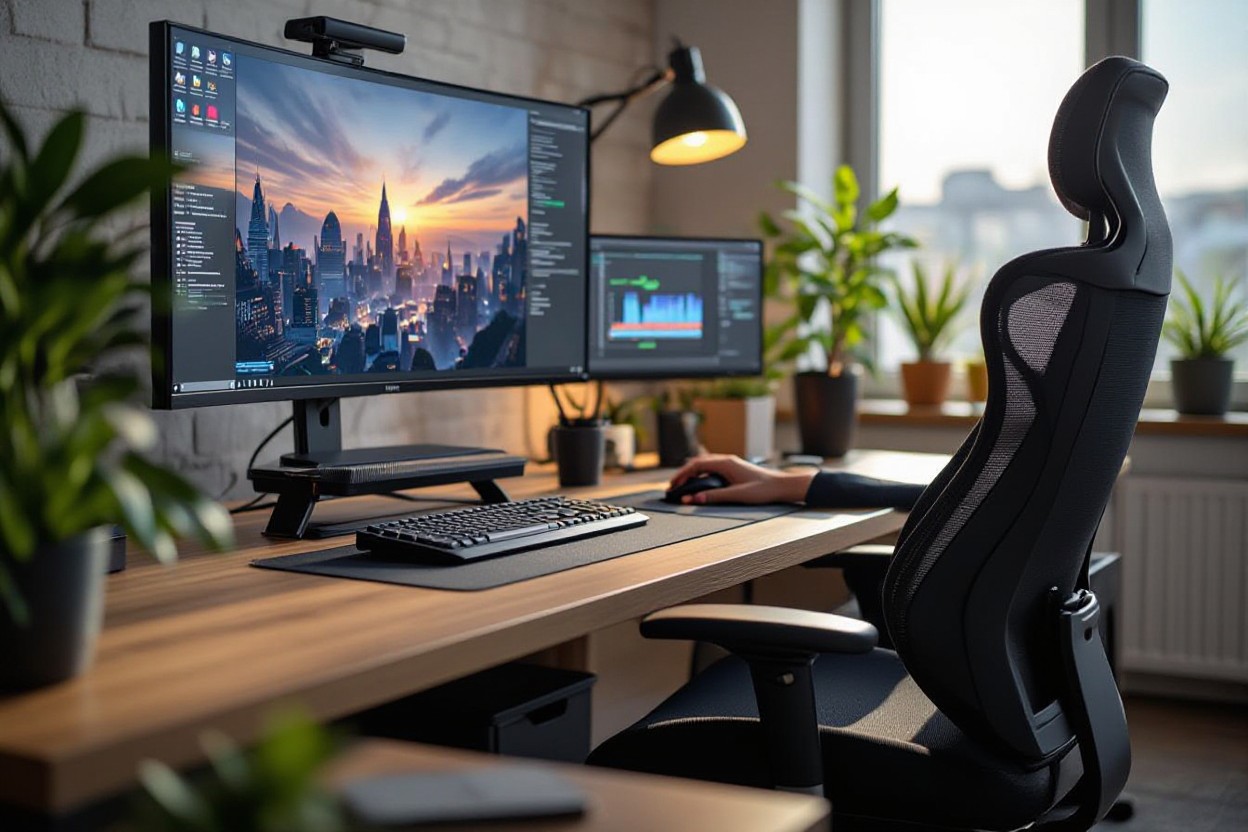
- Screen an arm’s length away
- Glare minimized (matte screen or adjusted lighting)
- Text size enlarged (no squinting)
- 20-20-20 rule: Every 20 minutes, gaze 20 feet away for 20 seconds
Feet and floor
- Stand part-time (sit-stand desks help)
- Anti-fatigue mats when standing
- Shift weight—avoid locked knees
- Shoes with roomy toe boxes
- Foot roller under desk (boosts circulation)
This setup cuts friction. Muscles work less. Nerves glide freely. Blood flows easier. Your voltage stabilizes.Movement as electricity: build microbreaks and “movement snacks”Motion feeds your system. Revs blood flow. Helps muscles use glucose. Fuels mitochondria. Lubricates joints. Sharpens your mind.
Sitting too long drains you. Microbreaks fix this. Research confirms they improve blood sugar and blood pressure. No gym required—just intention.
Try this rhythm:
- Focus 25-50 minutes
- Take 2-5 minute breaks
- Stand tall, reach upward
- Turn head left/right gently
- 10 air squats or calf raises
- Walk to a window
- 5 slow nose breaths
Daily “movement snacks”:
- 10-minute brisk walk after meals
- 8-12 desk push-ups
- Spine opener: Hands on low back, gentle arch (10 sec)
- Hip flexor stretch: Lunge stance, tuck pelvis (20-30 sec/side)
These bursts load muscles and bones. Tune your nervous system. Protect your wiring. Your voltage thanks you.
Breath, heart, and the vagus: regulate your body’s voltage
Breath bridges heart and brain. Slow it down, stress fades. Heart rate variability improves—a sign of nervous system balance. Focus deepens.
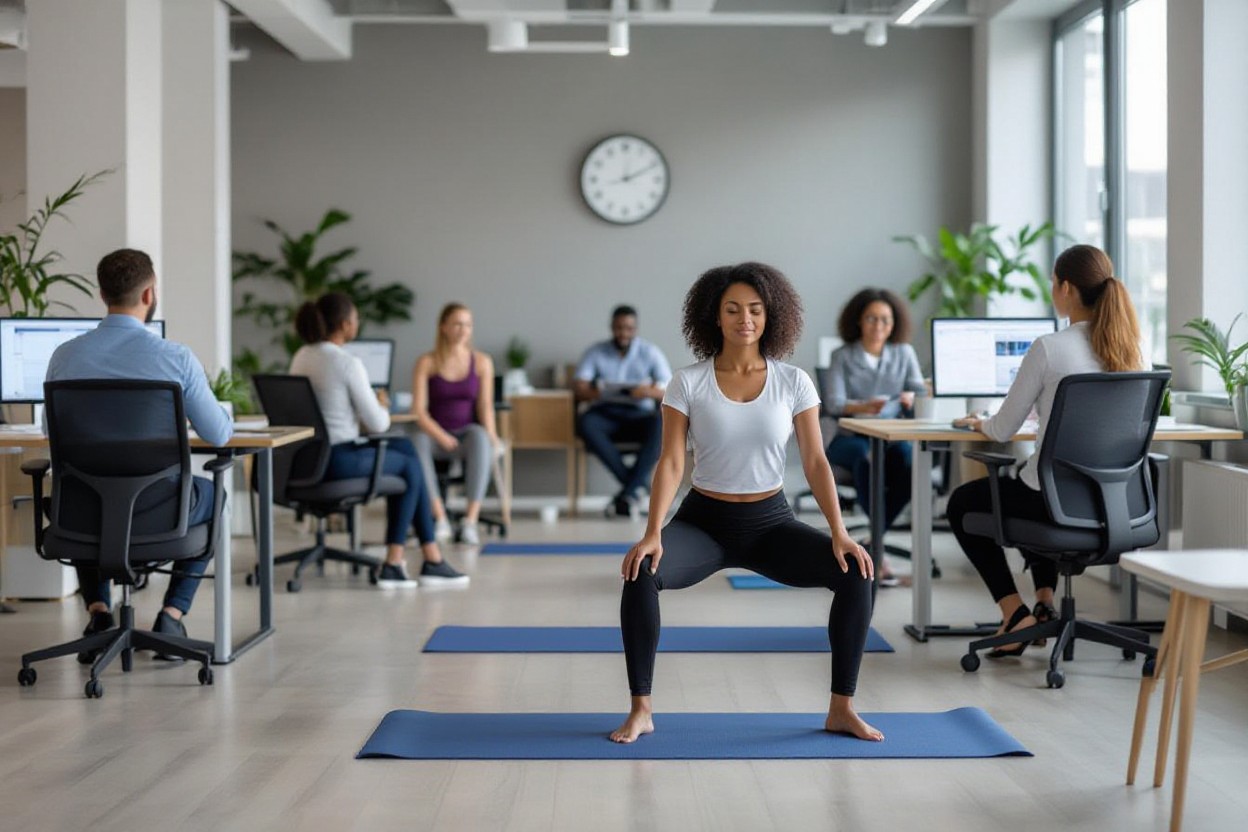
Simple breathwork:
- Nose breathing (warms air, may boost nitric oxide)
- 5-second inhale, 5-second exhale (2-5 minutes)
- 4-7-8 method: Inhale 4, hold 7, exhale 8 (gently!)
Reset moments:
- Before tough meetings
- After intense focus
- When jaw/neck tightens
Voltage thrives on calm. Breath builds that foundation.
Light, sleep, and circadian charge cycles
Light sets your internal clock. That clock rules hormones, sleep, and repair. It directs your daily voltage flow
Light smartly:
- Morning sun: 10-30 mins after waking
- Desk near window (natural light = alertness)
- Dim lights 2 hours pre-bed
- Warm screen tones at night
Protect sleep:
- 7+ hours nightly (CDC minimum)
- Consistent wake time
- Cool room (63-67°F ideal)
- Pitch darkness
- Quiet space
Sleep restores cell batteries. Sharpens learning. Fuels immunity. Recharges voltage.
Conclusion: treat your body like an operating system
Your work life can drain you—or power you. The difference lies in your setup. Your movement patterns. Your breath and rest. “your body’s voltage” frames this simply. Keep signals clear. Keep energy steady.
Use this guide. Stack small wins. Fit tools to your body. Break sitting with micro-movement. Breathe slow. Seek morning light. Guard sleep. Drink water. Eat real food. Lower stress static.
These aren’t quick fixes. They’re core habits. They support your nerves, muscles, and mind. Let your body work as designed. Keep your voltage strong. Show up daily focused, fluid, and fully charged.



